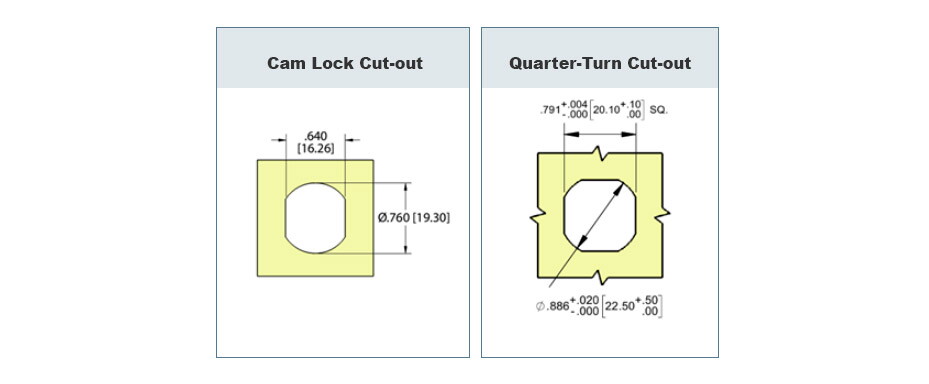Cam locks and quarter-turn latches belong to distinct families of components, often mistaken for one another due to their resemblances. Nonetheless, several aspects differentiate these parts, aiding in discerning between them. While personal preference often dictates the choice between them, understanding their characteristics facilitates an informed decision regarding the most suitable option for specific requirements.

Both cam locks and quarter-turn latches function as rotational cam latches, serving a fundamental purpose. In essence, the cam, also known as a pawl, is pivotal in securing the closed position and rotates akin to clock hands in both directions upon manipulation. An actuator located on the latch's facade facilitates the rotation of the cam, enabling the transition between open and closed states to permit access to the panel or maintain its closure. Additionally, a stopper regulates the extent of the cam's rotation in either direction, the type of which varies depending on the chosen cam latch lock. Further elaboration on this aspect will be provided later.
Locks and latches each possess an industry-standard cut-out, typically punched into a door or access panel. Installing either a cam lock or quarter-turn latch involves tightening a hex nut on the threaded body of the latch housing to secure it against the flange on its scalp. The cam, situated on the body's rear side, engages with the frame or another internal surface to prevent door opening. The distance between the mounting surface and the latching surface is termed the grip range, with both types featuring a non-adjustable fixed grip determined by the latch housing's length and the cam's offset.
The differences between cam locks and quarter-turn latches become apparent upon closer examination. How do they operate differently? Generally, cam locks employ traditional key-turn actuation, whereas quarter-turn latches rely on tool-action or hand activation, with exceptions existing for both types. Cam locks feature a "double D" shape cut-out, resembling two capital letter D's back to back, while quarter-turn latch cutouts are square-shaped with rounded corners. Furthermore, all quarter-turn latches are rated for NEMA 12 / IP65 applications or better, whereas most cam locks lack seals to protect against water ingress.
Cams for both quarter-turn latches and locks are typically sold separately from the bodies and are installed using a removable screw. However, smaller body lengths of cam locks necessitate permanently spinning on the cams with a rivet due to limited space to enclose both the lock tumbler and screw hole. Cam lock cams are simple stamped pieces of sheet metal, thus reversible to allow for offset-in or offset-out orientation. They also typically feature a star-shaped mounting hole for installation at various angles. In contrast, QT latch cams are not reversible due to a bump stopper on one side, fitting into a special groove on the housing for the signature rotation they derive their name from. These cams also have flared edges at the tip to provide mild compression against the door at precise grips.
All quarter-turn latches are designed for 90-degree functionality when used with the intended cams. Cam locks achieve rotation by employing a separate stop washer behind the cam. Stop washers are available for both 90-degree and 180-degree rotation, meaning cam locks are not always limited in the same way as QT latches. Sometimes, referring to a cam lock as a "quarter-turn latch" based on its function would not technically be incorrect, similar to how all squares are rectangles, but not all rectangles are squares.
Cam Locks & Quarter Turn Latches for Various Applications Generally, quarter-turn latches offer more sophisticated features (and are thus more expensive) than basic style cam locks. Cam lock systems are popular for simple, low-security applications like mailboxes and display cases, where key locking functionality is preferred and sealing from water and dust is unnecessary. Quarter-turn latches are better suited for electrical enclosures like NEMA boxes and other situations where grip range is crucial for achieving gasket compression on the door. Whether you need a cam lock or quarter-turn latch, we have the part you require.
